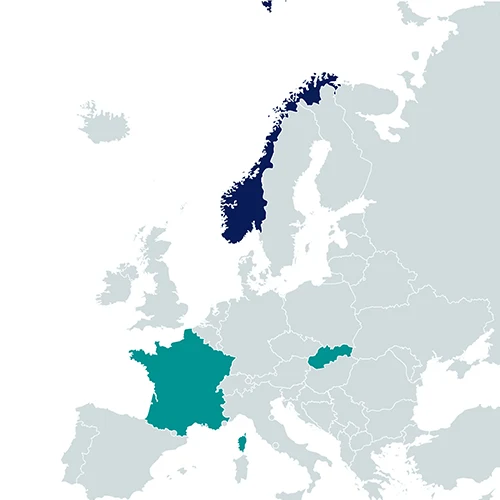2023-03-01 to 2026-02-28
Approx. 700 thsd. EUR
Dr. Roel May
-
Department of Terrestrial Ecology, Norwegian Institute for Nature Research, Trondheim, Norway
-
Department ECODIV – Research Unit RECOVER, National Research Institute for Agriculture, Food and Environment, Aix-en-Provence, France
-
Department of Ecological Analyses, Institute of Landscape Ecology – Slovak Academy of Sciences, Bratislava, Slovakian

Anthropogenic land‐use changes have degraded landscapes and caused declines in biodiversity, ecosystems and their services. The current network of legally Protected Areas (PA) is not sufficiently large to safeguard biodiversity. The 30×30 target of the EU Biodiversity Strategy for 2023 (EU BDS2030) is a commitment to protect at least 30% of land and sea for nature by 2030. This requires transformative change in the use of land, and massive upscaling of ecosystem restoration, to combat land degradation, protect biodiversity and ecosystem services, and ensure human well‐being. These are unlikely to be achieved effectively within the PA networks alone, but need regime shifts in the social and policy context of landscape management. A coherent network of PAs needs to be complemented with Other Effective area-based Conservation Measures (OECMs) to ensure that biodiversity goals are aligned with local values, needs and governance, including sustainable value creation and business development. Biodiversity-negative outcomes can only be mitigated through synergistic ‘land sparing’ surrounded by favourable ‘land sharing’ approaches.
The overarching aim of PAREUS is to perform a spatially explicit cross-country assessment of existing land-use planning and conservation practices for identifying improvements needed for reaching the EU BDS2030 targets. Specifically, PAREUS will apply an innovative landscape approach to integrate policy and practice for multiple land uses to ensure equitable and sustainable use of land within a spatially explicit framework and in close collaboration with stakeholders from multiple sectors to ensure the co-creation of knowledge.
PAREUS will create an engagement and co-creation arena involving the whole spectrum of stakeholder perspectives with often conflicting social and economic interests regarding PAs, OECM and sustainable landscapes. Jointly, we will explore different ways to create a coherent network of PAs for biodiversity where also the wider countryside is included. For this, PAREUS will perform a spatially explicit social-ecological accounting of regional landscapes to enhance the potential for biodiversity conservation through OECM approaches. We will also evaluate the policy landscape regarding the consequences of current land-use planning practice. A geo-prospective planning tool will be developed to create participatory visualizations of the future orientation of landscapes. Our communication strategy is to create increased awareness about the possibility to achieve biodiversity targets through a combination of land sparing (PAs) and land sharing (OECM) for a broad target audience.
Through transnational and transdisciplinary research and national case studies, PAREUS will identify factors that prevent targets from being implemented at the national scale, and how they may be crystallized into national and regional strategies and policies. By tackling the central challenge of biodiversity and land degradation from the perspective of transformative governance, PAREUS will be able to complement PA conservation with OECM approaches and help EU member states and associate members to implement their own national biodiversity strategy.